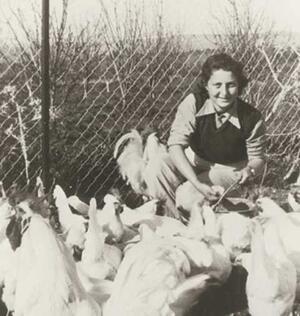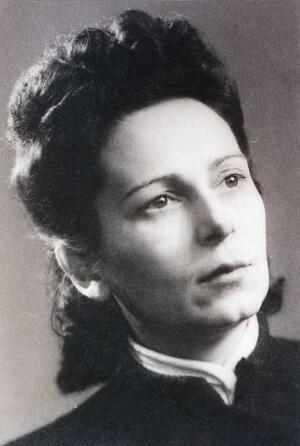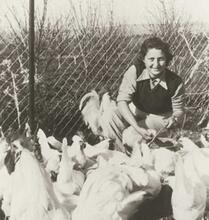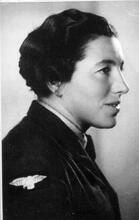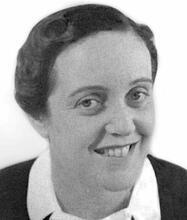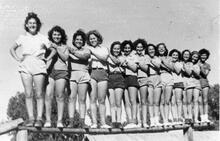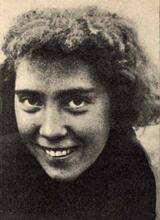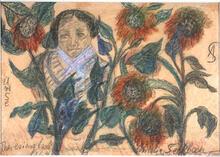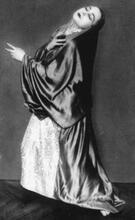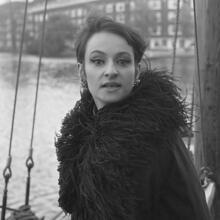Jewish Women Partisans
The recorded testimonies of Jewish women partisans present a more complex gendered picture of partisan activism than the conventional portrayal of an exclusively male arena of armed guerillas. Though Jewish female partisans were fewer than their male counterparts, rarely held leadership positions, and fought less frequently in armed battle, they assumed the identity, principles, discipline, and objectives of partisan fighters. Against stereotype, women’s real experiences did not conform to prevailing ideas about partisan machismo and antisemitism or about women’s activism being mostly supportive of men’s armed combat. Regardless of gender, all partisans hid by day and fought or traveled by night; they lived off the land and slept in makeshift dugouts. The physical hardships treated men and women equally.
Introduction
Women contributed to partisan operations across Nazi-occupied Europe in necessary, sometimes critical, ways. Of an estimated 30,000 Jews among the hundreds of thousands of partisans who waged guerilla warfare against Nazi Germany and its collaborators, ten percent were women. They smuggled guns and ammunitions, fought in armed combat, engaged in reconnaissance activities, coordinated with Jewish leaders in ghettos and undergrounds, mobilized resistance, documented partisan activities, tended the wounded, and rescued and sheltered fellow Jews. Their exploits are all the more remarkable given that neither women nor Jews were readily welcomed into the partisan units, most of which were not Jewish-led and comprised perhaps the most masculine domain of all the resistance arenas.
Jewish women partisans left an invaluable record preserved in oral histories, memoirs, poetry, photographs, and film, as well as in contemporaneous and postwar testimonies. These records help reveal the gendered experience of Jewish partisan resistance and present a more complex picture of resistance than the conventional portrayal of an exclusively male arena of armed guerillas. Though Jewish female partisans were fewer than their male counterparts and rarely held leadership positions or fought in armed battle, they assumed the identity, principles, discipline, and objectives of partisan fighters.
Poland and other Eastern European countries bordering the Soviet Union had the largest prewar Jewish populations and provided two-thirds of all Jewish partisans in Europe. The distinctive experiences of Jewish women partisans from France, Greece, Italy, and Mandate Palestine further illuminate the historical breadth of experience.
Partisan Formations in World War II
The word “partisan” is used here interchangeably with guerrilla, irregular soldier, and underground fighter. In World War II, partisans used guerilla-type warfare for a wide variety of activities, such as killing Nazi occupiers and their collaborators, disrupting transportation and communications lines, damaging power plants and factories, and raiding police stations to seize weapons. In the east, after Germany invaded the Soviet Union, thousands of escaped Soviet POWs and soldiers cut off from their formations established units to sabotage military and strategic outposts and facilities. They were organized into semi-military combat units, led by colonels and generals, that took orders from the Soviet Red Army.
Civilians, including Jews, soon began to join these units. When, for example, three partisan formations comprised mainly of Soviet POWs inflicted heavy losses on German troops in the Polish garrison town of Lenin (now in Belarus), the partisans withdrew with artillery and the town’s 27 remaining Jewish prisoners, including 23-year-old Faye Schulman (born Faigel Lazebnik). After persuading the partisans (falsely) that she had medical experience, she served as a nurse with the brigade’s only doctor, a veterinarian. For two years, from September 1942 to July 1944, Schulman nursed wounded partisans or those taken ill. Her fluency in Russian and Belorussian enabled her to conceal her Jewish identity from her non-Jewish partisan colleagues.
Generally, however, even when Jews were skilled or hard-working, they were regarded as liabilities, because they were the primary target of the Nazis and their collaborators. Local populations, though often loyal to the partisans, might betray Jews in exchange for food or other bribes from the Nazis. Some partisans, due to their own antisemitic beliefs, would rather kill Jews than harbor them.
Jewish Partisan Units
The Jewish partisan resistance differed from other partisan units in its twofold purpose: first, to fight the Nazis and their collaborators, and second, to aid and rescue fellow Jews and accept them unconditionally into their units. Mira Shelub recalls that the threats from non-Jewish partisans to Jewish survival led to the creation of all-Jewish camps. Her husband Nochim, whom she first met in a Soviet unit, established one such camp in eastern Poland to protect himself and fellow Jews from antisemitic treatment by Russian partisans (Jewish Partisan Educational Fund).
The Bielski Brigade in Ukraine’s Naliboki Forest, for example, set up family camps for women, children, the elderly, and the sick that were maintained separately from their fighting units. From 1942 until the end of the war, the Bielski camp alone gave refuge to more than 1200 Jews, who assisted in military operations or repaired weapons, made clothing, and cooked for the fighters. Women made up 30 to 40 percent of the Bielski population.
One recruit to the Bielski camp was Leah Bedzowski of Lida, Poland (now in Belarus). Leah, her mother, and her three younger siblings escaped the Nazi invasion in June 1941 by hiding with a farm family on the outskirts of town. When the farmer felt it had become too dangerous, the Bedzowskis returned to Lida and were forced into the ghetto. Remarkably, they received a letter from Tuvia Bielski, a family friend and one of the Bielski brothers who had established the Bielski camp, offering refuge to the family. With the help of a Bielski partisan, they escaped the ghetto.
Women accounted for one in four inhabitants of the Jewish partisan camps, compared to one in fifty in non-Jewish units. However, the camps were vulnerable to attack from the Germans and their local collaborators. Gertrude Boyarski’s mother and younger siblings lived in a family camp while Gertrude, her father, and an older brother lived nearby in the fighters’ camp. Gertrude recalled that the last time she visited her mother in the family camp, shootings interrupted the visit. A surprise attack by local collaborators killed many unarmed members of the family camp, including Gertrude’s mother. Gertrude and her siblings ran to her father’s unit, where they remained through the end of the war.
Paths to Partisan Resistance
Family survival in ghettos
Women’s accounts of how they made their way into partisan units highlight common experiences and provide a basis for understanding the gendered context for their behaviors, attitudes, and actions. Women in the ghetto sought information both from the German-controlled Jewish council (Judenrat) and from underground movements. Mothers typically organized their families’ daily lives and coping tactics, such as bartering goods and finding food, shelter, and medical assistance. They assumed this role due partly to conventional gender roles and partly to the fact that men usually comprised only 30 percent of a ghetto population because they were the first to be targeted for death or slave labor.
Mothers who believed that all Jews would be killed sometimes tried to place their children with Christian families or in convents, and others sought ways to escape. When 20-year-old Rae Kushner and her family were herded into a courthouse with 600 Jews in the Novogrodek ghetto in eastern Poland, her mother and oldest sister were killed. When only 300 Jews remained in the courthouse, including Rae, her father, brother, and younger sister, the entire group planned an escape through a 600-foot tunnel, which they dug by night. Rae and her surviving family hid in the woods for ten days and found their way to the home of an acquaintance. Soon after, a group of Jewish partisans organized by the Bielski brothers rescued the family and other Novogrodek escapees and took them to the family encampment in the Naliboki forest (U.S. Holocaust Memorial Museum).
Underground youth movements empower women
Underground resistance movements developed in about 100 Jewish ghettos in Nazi-occupied eastern Europe. Their main goals were to organize uprisings, break out of the ghettos, and join partisan units. The Jews knew that uprisings would not stop the Germans and that only a handful of fighters would succeed in escaping. The groups were affiliated with prewar progressive entities, including Zionist organizations such as Dror, Ha-Shomer, and Akiva, and political parties such as the Jewish Socialist Bund and the Communist Party.
Women’s involvement in youth groups usually began in high school prior to the war’s outbreak and continued in the ghetto. Zionist, socialist, and communist youth movements advocated gender equality, empowering young women to assert themselves in their groups (Weitzman). Women in the underground youth movements even led resistance operations, “an unusual phenomenon in a pre-feminist era” (Ronen). In ghettos across Poland, female underground leaders, usually young, carried out reconnaissance, traveling between ghettos to deliver news, discuss strategy, and, by the start of 1942, mobilize resistance among Jews. Tales of their deeds and resourcefulness spurred other women to seek out the partisans.
Exploiting traditional gender norms
Women’s demonstrated ability to fight and the demands of war loosened gender roles and attitudes. The Jewish resistance groups commonly reconstructed gender norms and delegated tasks in similar ways. For example, men were regarded more vulnerable to harassment, whereas “it was to the advantage of women that most of their adversaries were male, and women were less suspected of illegal activities by them—the old male underestimation of the power of a woman,” noted the Czech-born anti-Nazi resistance fighter and historian Vera Laska, writing about women’s resistance in World War II and the Holocaust (255).
Jewish women partisans demonstrated useful abilities based on valued characteristics. Many of them spoke their country’s native language or multiple languages with proficiency. Some could “pass” as Christian or Slavic, while Jewish men, most of whom were circumcised, could not. Additionally, Jewish women were often more familiar and comfortable with the mainstream society through schooling or work and could navigate persuasively through public spaces. Those who lived in Polish neighborhoods or worked with Poles or attended Polish schools were “familiar with the styles and rhythms of daily life among their Catholic neighbors” (Weitzman, JWA). They could hold meetings in parks or cafes and transmit messages, smuggle supplies, or escort fugitives into hiding. These tasks transcended their traditional societal roles.
Although evidence is sparse, it seems that some Jewish partisan leaders may have attempted to organize their family camps according to conventional gender roles. In the Bielski camp, Rae Kushner recalls being tasked with standing guard and cooking meals. Eta Wrobel, 21-years-old, who helped form a Jewish camp in central Poland in October 1942 that grew to 200 residents, recalled she made sure never to wash men’s clothes or cook their meals: “I refused to do it, because I had never done it at home” (Jewish Partisans Educational Fund).
Photographing the Partisan Experience
One of the few known Jewish partisan photographers was a woman, Faye Schulman. Her images capture the camaraderie, horror and loss, bravery and triumph of the partisans—some Jewish, some not. One shows a funeral scene in which two Jewish partisans are being buried alongside Russian partisans, despite the unit’s antisemitism. Another photograph shows her new automatic rifle, which she carried wherever she went and symbolized “my history as a partisan,” she explained after the war. Noted her interviewer, “Her memories made visible through her photos provide insight into the partisans’ lives and their dedication to the fight. Her words make the image moving and real, impressing upon the viewers the horror of war, the lessons of revenge and resolution, and the resilience of one woman’s spirit” (Jewish Partisans Educational Fund).
Schulman received her first camera from her brother when she was thirteen years old. That camera ultimately saved her life when the Nazis held her back from death to document their mass killings of her community. Schulman observed the murdered Jews and, to her horror, identified her entire family. Determined to fight back, she fled to the woods with a partisan brigade, aided by a Jewish partisan who served as a liaison among the guerilla units that raided her town and helped local Jews escape. During a second raid on the village by her partisan unit soon after, she recovered her camera and photographic equipment. Her comrades-in-arms appreciated her endeavors and the photographs she gave them: “They treasured their pictures and respected me for it.”
Schulman once said in an interview: “I want people to know that there was resistance. If [Jews] had the slightest opportunity to fight back, they did and took revenge. Many lost their lives heroically. I was a photographer. I have pictures. I have proof.”
French Partisans
With the war’s disruption of the social fabric in France, Jewish women from various backgrounds, ages, and class engaged in multi-faceted resistance activities, from rescue and aid, to sheltering children, to partisan sabotage and subterfuge. Though there were no Nazi ghettos in France, Jews suffered detention and transit camps and migrations from France’s Nazi-occupied north to the Vichy collaborationist south, often ending in deportations to concentration and death camps.
Jewish partisans were active in both French and Jewish-led underground groups. Comprising the majority of the Communist Free-Shooters and Partisans’ Immigrant Movement (FTP-MOI), a subdivision of France’s resistance movement, they carried out bombings and raids of Nazi strongholds. The Zionist-led Armée Juive, an armed Jewish underground founded in Toulouse in 1942, trained in forests and conducted sabotage missions. The AJ later opened its ranks beyond Zionists, at its height growing to 2000 participants. In 1944, it joined forces with the Eclaireurs Israelites de France (EIF) and consolidated into the Organisation Juive de Combat, fighting the retreating German army and helping liberate key French cities including Paris in August 1944. The Armée Juive was co-founded by Abraham and Eugenie Polonski and David and Ariane Knout, though the women are often omitted from historical accounts. Ariane Knout was a major strategic and ideological force in the AJ and was assassinated by Vichy militia in July 1944, weeks before France’s liberation (see Jewish Resistance Organizations in France: 1940-1944).
Capitan Sarika and Her Greek All-Female Brigade
Occasionally, Jewish women took an active tactical role. Teen-aged Sarah “Sarika” Fortis organized a group of female partisans recruited from peasant villages around the Greek town of Chalkis. She traveled by donkey from village to village and assembled a platoon of a dozen girls, telling them and their families: “Don’t look at the place of the woman as needing to be at home all the time. Women can also help and have a role in resistance” (Jewish Partisans Educational Fund). The platoon was constantly on the move, slept outdoors, and often traveled with male partisans. They learned to shoot and throw Molotov cocktails. Capitan Sarika, as she came to be known throughout Greece, taught the girls how to behave around men. “They all came from homes in which a girl would never speak to a man and suddenly I was telling them, ‘You’re a partisan now.’ It’s really difficult for a girl from an isolated village to learn to behave as an equal among men.” After the war, the girls worried they would not be taken back in their villages, which had strict rules defining a woman’s place. But they were all accepted, as was their Capitan.
Mara Diena, Teen Partisan Courier in Italy
Marissa Diena was the third resistance fighter in her family. The Italian Fascists arrested her older brother in 1943, and a year later her younger brother was gunned down in the mountains. Marissa joined a communist group, the Garibaldi Brigades, that hid in the mountains but worked in the towns below. Because gasoline was rationed, Mara traversed the foothills by bicycle, working as a communications link with the partisans. “Young people like me didn’t know how to do anything. We weren’t soldiers. I was a little girl who’d just left school, but I understood that to give information, I needed to have contacts where the enemy was, where the Germans and Italian Fascists were. So I rode my bicycle everywhere” (Jewish Partisans Educational Fund).
Like Sarika in Greece, Marissa was a Jewish female teenager playing a leadership role in a non-Jewish partisan group. Unlike in Eastern Europe, where antisemitism was prevalent and the local population did not commonly harbor Jews, Sarika and Marissa had not experienced antisemitism prior to World War II, and neither felt persecuted by her fellow partisans for being Jews. Each was more sensitized to gender and class inequalities than to antisemitism. Each was accepted by the non-Jewish partisans and rewarded for her achievements.
The Parachutists
On the eve of the Holocaust, many Jews emigrated to Palestine to build a Jewish state and to save themselves from an unknowable future in Europe. Among the few who returned to Europe to save others, the Jewish Parachutists of Mandate Palestine were a group of 250 Jewish women and men who volunteered for operations run by British organizations M19 and the Special Operations Executive (SOE). Mainly young East European Jews, they joined secret missions in countries such as Yugoslavia, Czechoslovakia, and Hungary, of which they had intimate knowledge. They wanted primarily to save Jewish lives, though that was not necessarily an important consideration for their British handlers.
The missions involved parachuting into Nazi-occupied Europe between 1943 and 1945 to organize resistance to the Germans, aid in the rescue of Allied personnel, and carry out assignments set by the Jewish Agency of Palestine. Working closely with partisan units, they were the only military rescue mission for Jews during World War II. Recruits were sought who spoke the local languages and could blend in; it was less important to be militarily fit. “We were not leaders, just normal people,” recalled Romanian-born Surika Braverman, who outlived all of the original 250 volunteers (Jerusalem Post, 2013).
Braverman was one of three women among 32 parachutists. The other two, Hannah Szenes (1921-1944) and Havivah Reik (1914-1944), died during their clandestine missions in Hungary and Slovakia respectively and were lionized in Israel (JWA). Braverman, who survived the war and whose subsequent accomplishments distinguished her throughout her lifetime, is less known than Senesh and Reik, even though she became one of the first female fighters to serve in the Palmach, the elite strike force of the Haganah underground military organization, and a founding member of the Israeli Defense Forces (IDF) Women’s Corps.
Braverman was born in the city of Botosani in northern Romania, which had a prosperous Jewish population before the war. Her parents were Zionists, and as a girl Braverman joined Hashomer Hatzair. In 1938 she emigrated to Palestine. With the outbreak of war in 1939 and Romania’s alliance with the Nazi regime, she lost contact with the Jews who stayed behind. Her mission took her to Yugoslavia in July 1944, and from there she was to enter Romania. When unforeseen events in Romania aborted that plan, she and her team assisted Tito’s partisans in the Yugoslavian mountains. Their cover was as British officers serving alongside British SOE commandos, who were in Yugoslavia to assist the partisan resistance. The Yishuv mission was also intended to show the British that the Jews of Palestine were committed to the Allied war effort.
Braverman noted that she and the other parachutists were realistic about their missions. “We didn’t go to Europe to overthrow the Third Reich… We wanted to go to the Jews of Europe and say that we had come to help” (Jerusalem Post, 2013). At the time of her death on February 10, 2013, Braverman was the last surviving member of the original parachute recruits.
Conclusion
It is possible that scholars have neglected Jewish women as partisans because the experiences of the women did not conform to prevailing ideas about the partisans’ machismo and antisemitism or about women’s activism being mostly supportive of men’s armed combat. Against stereotype, women’s testimonies illuminate their personal agency and fierce activism, exemplified in the words of Lithuanian partisan Fania Brantsovskaya, whose communist youth group helped her escape the Vilna Ghetto and join a Soviet unit: “I was given a rifle and then an automatic gun. I dragged it with me and took part in military missions. We blasted trains and placed explosives in the enemy's equipment. We shot and killed them. Yes, I did, I killed them and did so with ease. I knew that my dear ones were dead, and I took my revenge for them and thousands of others with each and every shot... I was an active girl. It was not a hope to survive, but a certain revenge and to feel like a man" (Centropa).
All partisans, regardless of gender, hid by day and fought or traveled by night. They lived off the land and slept in makeshift dugouts. They begged farmers or peasants for food, horses, and supplies, and if they were refused, they resorted to force and took whatever was needed. They lied, cheated, and stole. The physical hardships treated men and women equally.
Batalion, Judy. The Light of Days: The Untold Story of Women Resistance Fighters in Hitler’s Ghettos. New York: William Morrow/HarperCollins, 2021.
Laska, Vera. “Women in the Resistance and in the Holocaust.” In Different Voices: Women and the Holocaust, edited by Carol Rittner and John K. Roth, 250-269. St. Paul, MN: Paragon House, 1993.
Lazare, Lucien. “Resistance, Jewish Organizations in France: 1940-1944.” Jewish Women: A Comprehensive Historical Encyclopedia. February 27, 2009. Jewish Women’s Archive. https://jwa.org/encyclopedia/article/resistance-jewish-organizations-in….
Penn, Shana. Jewish Women in the Partisans, A Study Guide. San Francisco: Jewish Partisans Educational Fund, 2007. https://www.jewishpartisans.org/content/jewish-women-partisans-study-gu…
Ronen, Avihu. “Poland: Women Leaders in the Jewish Underground During the Holocaust.” Jewish Women: A Comprehensive Historical Encyclopedia. February 27, 2009. Jewish Women's Archive. https://jwa.org/encyclopedia/article/poland-women-leaders-in-jewish-und…
Schulman, Faye. A Partisan’s Memoir: Woman of the Holocaust. Toronto: Second Story Press, 1995.
Sokol, Sam. “Sarah Braverman, pioneer paratrooper, dies at 95.” Jerusalem Post, February 10, 2013. https://www.jpost.com/National-News/Sarah-Braverman-pioneer-paratrooper…
Tydor Baumel, Judith. Double Jeopardy: Gender and the Holocaust. London: Vallentine Mitchell, 1998.C:\Users\susanepenn\Downloads\JPEF_Schulman_exhibit01 (1).pdf
Tydor, Judith. "Hannah Szenes (Senesh)." Jewish Women: A Comprehensive Historical Encyclopedia. February 27, 2009. Jewish Women's Archive. https://jwa.org/encyclopedia/article/szenes-hannah.
Tydor, Judith. “Havivah Reik 1914-1944.” Jewish Women: A Comprehensive Historical Encyclopedia. February 27, 2009. https://jwa.org/encyclopedia/article/reik-havivah
Weitzman, Lenore J. “Kashariyot (Couriers) in the Jewish Resistance During the Holocaust.” Jewish Women: A Comprehensive Historical Encyclopedia. February 27, 2009. Jewish Women's Archive. https://jwa.org/encyclopedia/article/kashariyot-couriers-in-jewish-resi…
Oral Histories:
Fania Brantsovskaya. Centropa (Vienna, Austria). https://www.centropa.org/biography/fania-brantsovskaya
Leah Bedzowski. United States Holocaust Memorial Museum’s Holocaust Encyclopedia. https://encyclopedia.ushmm.org/content/en/article/leah-johnson
Gertrude Boyarski. Jewish Partisans Educational Fund (JPEF). https://www.jewishpartisans.org/partisans/gertrude-boyarski. Date unknown. JPEF transcript in author’s possession; contact JPEF for access.
USC Shoah Foundation. https://vhaonline.usc.edu/viewingPage?testimonyID=2715&returnIndex=0
Marisa Diena. Jewish Partisans Educational Fund. https://www.jewishpartisans.org/partisans/marisa-diena. Oral history conducted on April 7, 2004. JPEF transcript in author’s possession; contact JPEF for access.
Sarah Fortis. Jewish Partisans Educational Fund. https://www.jewishpartisans.org/partisans/sara-fortis. Date unknown. JPEF transcript in author’s possession; contact JPEF for access.
Rae Kushner. United States Holocaust Memorial Museum’s Holocaust Encyclopedia. https://encyclopedia.ushmm.org/content/en/article/rae-kushner
Oral history transcript, 1982. https://collections.ushmm.org/oh_findingaids/RG-50.002.0015_trs_en.pdf
Sonia Orbuch. Jewish Partisans Educational Fund. https://www.jewishpartisans.org/partisans/sonia-orbuch. Oral history conducted on July 23, 2001. JPEF transcript in author’s possession; contact JPEF for access.
USC Shoah Foundation. May 24, 1998. https://vhaonline.usc.edu/viewingPage?testimonyID=44768&returnIndex=0
Faye Schulman. Jewish Partisans Educational Fund. Oral history. https://www.jewishpartisans.org/partisans/faye-schulman
Exhibition “Pictures of Resistance: The Wartime Photography of Jewish Partisan Faye Schulman.” https://www.jewishpartisans.org/pictures-of-resistance
Mira Shelub. Jewish Partisans Educational Fund. https://www.jewishpartisans.org/partisans/mira-shelub. Oral history conducted, date unknown. JPEF transcript in author’s possession; contact JPEF for access.
Oral history by United States Holocaust Memorial Museum. July 1, 2007. https://collections.ushmm.org/search/catalog/irn701759
Eta Wrobel. Jewish Partisans Educational Fund. https://www.jewishpartisans.org/partisans/eta-wrobel. Oral history conducted on December 28, 2000. JPEF transcript in author’s possession; contact JPEF for access.
Oral history by USC Shoah Foundation. https://vhaonline.usc.edu/viewingPage?testimonyID=13898&returnIndex=0

